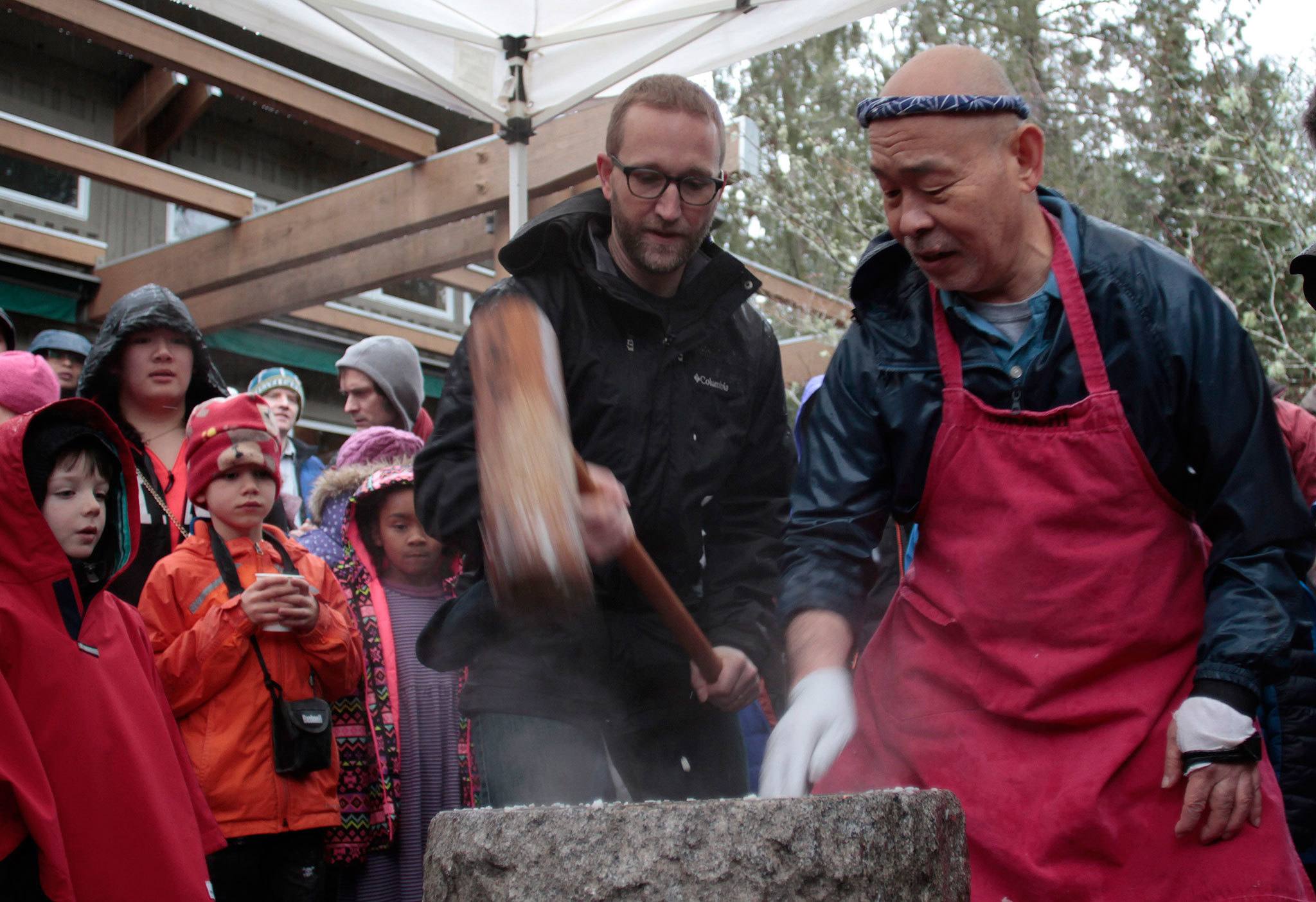The rain and chill did nothing to dampen the festivities at the 28th annual Bainbridge Island Japanese American Community’s public mochi tsuki festival. The big event once again saw throngs of revilers pack the IslandWood campus on the first Sunday on the new year to watch and participate in the ancient practice of mochi making — and eating — as well as other tenets of Japanese culture such as the folding of origami and performances by the visiting drummers of Seattle Kokon Taiko.
Parking quickly filled to capacity at IslandWood, and the nearby Captain Johnston Blakely Elementary School too, with overflow and late-arriving guests parking along Blakely Avenue and eagerly walking through the wind and rain to attend.
Mochi is a traditional Japanese rice cake. According to BIJAC, “For over a millennium, making and eating the sweet rice treat mochi has been a celebrated New Year’s tradition in Japan, with generations of families and communities coming together to wish good health and prosperity for the new year.”
For nearly 30 years, the Bainbridge Island Japanese American Community has hosted this, one of the largest public mochi tsuki (moe–chee sue–key), or “mochi making,” festivals in the country.
The traditional process of making mochi involves three key steps:
First, the washed sweet rice is steamed in small wooden boxes over an open fire;
Then, the cooked rice is placed into a warm stone or concrete bowl (called an usu) and, using large wooden mallets, two or three people rhythmically pound the rice into a sticky paste while a third person uses his bare hands to swiftly move it between each mallet strike until;
Finally, the resulting dough, mochi, is torn into small pieces and rolled into cakes.
Some are eaten plain and some are filled with a sweet bean paste called ahn. Mochi can be eaten fresh, right away or taken home and frozen to be eaten later, often roasted and dipped in a sweetened soy sauce. It is also often served with seaweed wraps, such as the kind used in sushi making, called nori.
Modern twists on the classic recipe have included many novel additions, such as ice cream, chocolate, peanut butter and pie fillings.



